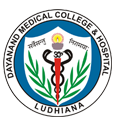DAYANAND MEDICAL COLLEGE & HOSPITAL, LUDHIANA
Plastic Surgery Day observed
Department of Plastic Surgery of DMCH and Ludhiana Association of Plastic Surgeons celebrated ‘Plastic Surgery Day’ at Government Senior Secondary School in Gobind Nagar.
Dr Sanjeev Uppal (Professor & Head of Plastic Surgery) delivered a talk on the topic ‘First Aid in Burns’. Later the team comprising of Dr Bhupinder Singla, Dr Karan B Singh, Dr Vikas Jain and Dr Maninder Kaur conducted a Quiz on ‘First Aid’. Mr Badhan , the Principal of the School , distributed the prizes .
Dr Uppal told the students that though the treatment of burns is complex and patient should be under expert medical care but certain first aid measures can help the patient.Some of the tips for giving first aid in minor burns are :
-
Don't break small blisters (no bigger than your little fingernail). If blisters break, gently clean the area with mild soap and water, apply an antibiotic ointment, and cover it with a nonstick gauze bandage.
-
If needed, take an over-the-counter pain reliever, such as ibuprofen (Advil, Motrin IB, others), naproxen sodium (Aleve) or acetaminophen (Tylenol, others).
1st-degree burn
A first-degree burn is the least serious type, involving only the outer layer of skin. It may cause:
You can usually treat a first-degree burn as a minor burn. If it involves much of the hands, feet, face, groin, buttocks or a major joint, seek emergency medical attention.
2nd-degree burn
A second-degree burn is more serious. It may cause:
If the second-degree burn is no larger than 3 inches (7.6 centimeters) in diameter, treat it as a minor burn. If the burned area is larger or covers the hands, feet, face, groin, buttocks or a major joint, treat it as a major burn and get medical help immediately.
3rd-degree burns
The most serious burns involve all layers of the skin and underlying fat. Muscle and even bone may be affected. Burned areas may be charred black or white. The person may experience:
|







